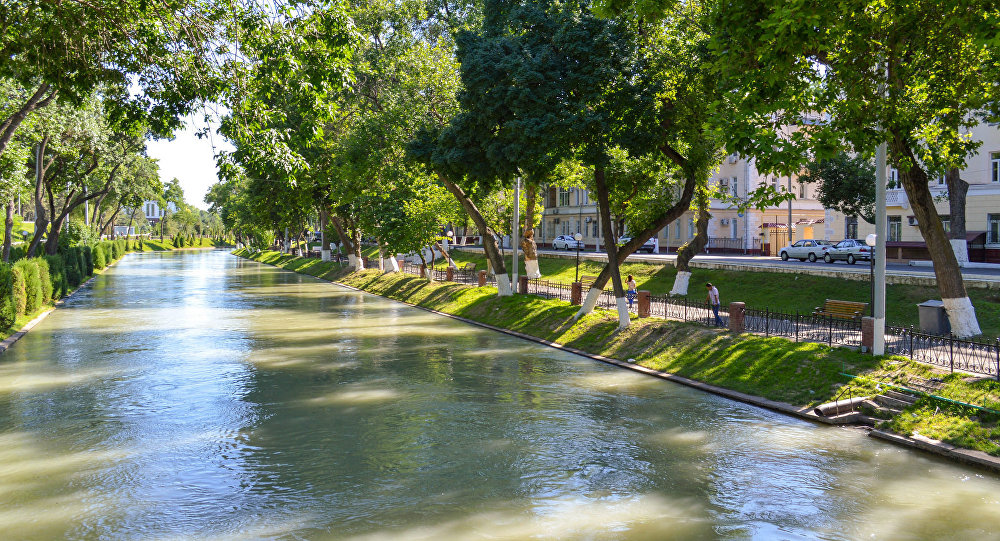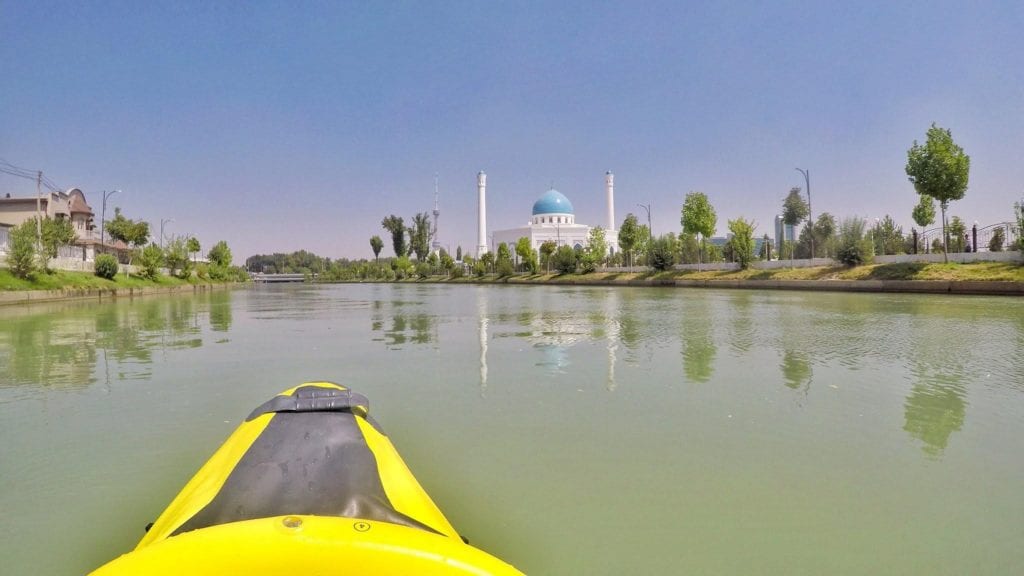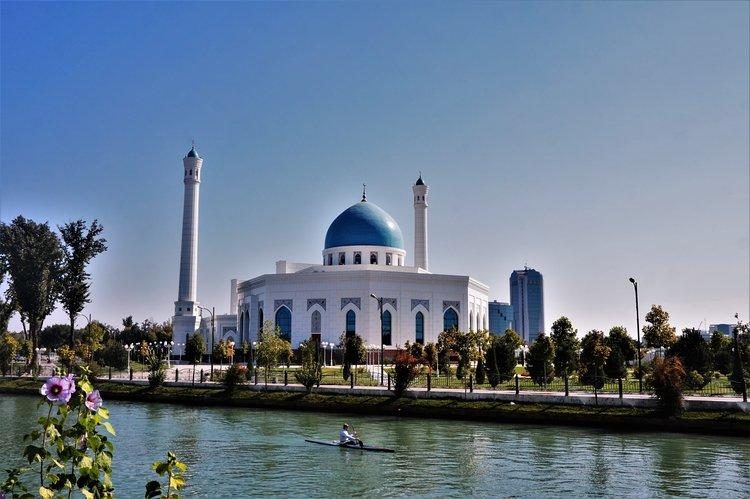Uzbekistan is known for its fantastic railway network, boasting an uber modern bullet train that crosses the country at breakneck speed, and a metro system that is one of the most dazzlingly decorated in the world. But until now, this doubly landlocked desert state in Central Asia offered very little opportunity to travel by water. Exciting new tourism projects in Tashkent, however, are opening up the capital’s manmade waterways to adventure tourists, who can now discover the city by kayak and take tours in motorised gondolas.

Ankhor Canal runs for 23.5km through the centre of Tashkent, ending up in a lake in the lush, green Alisher Navoi National Park. When the canal was built in the mid 19th century, it divided the Old Town from the new, European-style city. Its waters still nurture the numerous gardens and parks that bring colour to Tashkent at all times of year, and the historic trees cast a welcome shade, protecting walkers and picnickers from the glare of the summer sun. Cafés and restaurants, their outdoor tables normally always packed, line the canal bank and are lively late into the evening. Now and then, local boys dive into the canal to swim, but be warned: the water comes from the Chimgan Mountains just outside the city, and thus is icy cold.
The newest ways to enjoy Ankhor Canal, however, are afloat. Kayaks are available to hire from Jules Verne Hostel (33 Kattakurgan St). “For just US$20 you can paddle by some gorgeous scenery,” explains blogger Portia Jones of Pip and the City. “It’s so peaceful and serene, it’s hard to imagine you are right in the middle of a busy city.”
Kayaking is best in Tashkent in the spring and autumn, but if you’re visiting in the summer months, you can avoid the heat by starting early in the morning. This will also give you the chance to hear the birds twittering in the trees and to see the city waking up; not only that, but it also gives you the perfect excuse to treat yourself to a hearty breakfast in one of Tashkent’s many excellent coffee shops.
For a more leisurely boating experience, with no effort at all on your part, you can opt for a guided tour by motorised gondola. The small fleet of boats is an unexpected sight in Uzbekistan – it is, after all, a very long way from Venice – but there is a cultural link. Venice was the western terminus of the great Silk Road, and Tashkent was a trading centre at its heart. Travelling this way, you can sit back, admire the views, and listen as your guide regales you with stories of the city, and points out the many striking buildings along the way.

To make the most of the sightseeing, you need to stop periodically along the canal bank and clamber ashore. There are some fabulous examples of Soviet-era and contemporary architecture nearby, and you will want to see them up close. Look out in particular for the Museum of Olympic Glory, which has on display a medal from one of the early Olympic games in Athens in 400 BC; Tashkent TV Tower, which is the tallest structure in Central Asia, and was designed to withstand earthquakes up to 9.0 on the Richter scale; and the summer amphitheatre at Turkiston Concert Hall, a masterpiece of Soviet modernism.
The other must-see building along the Ankhor Canal is the huge Minor Mosque, which can accommodate 2,400 worshippers. Often known as the White Mosque on account of its gleaming marble, it’s an incredibly peaceful place to spend half an hour or so of your time.

Although the mosque looks very much in keeping with Uzbekistan’s medieval architectural styles, Minor Mosque is in fact brand new. It was finished only in 2014, a tribute to the post-independence cultural revival of Islam in Uzbekistan. The towering minaret is graceful, and the turquoise dome is a nod to the dominant colour of the UNESCO World Heritage monuments of Samarkand and Bukhara. The mosque is a practising place of worship, not a museum; but visitors are welcome, and many city residents come to enjoy the landscaped gardens and sit here in the shade.
In a world where social distancing is to become the norm, outdoor travel experiences have great appeal. When you are floating along a waterway as scenic as the Ankhor Canal, with the cultural treasures, cafés, and restaurants of Tashkent only a stone’s throw away, it actually feels like an upgrade to the traditional means of sightseeing.
More information
For more on travel in Uzbekistan, take a look at our comprehensive guide: